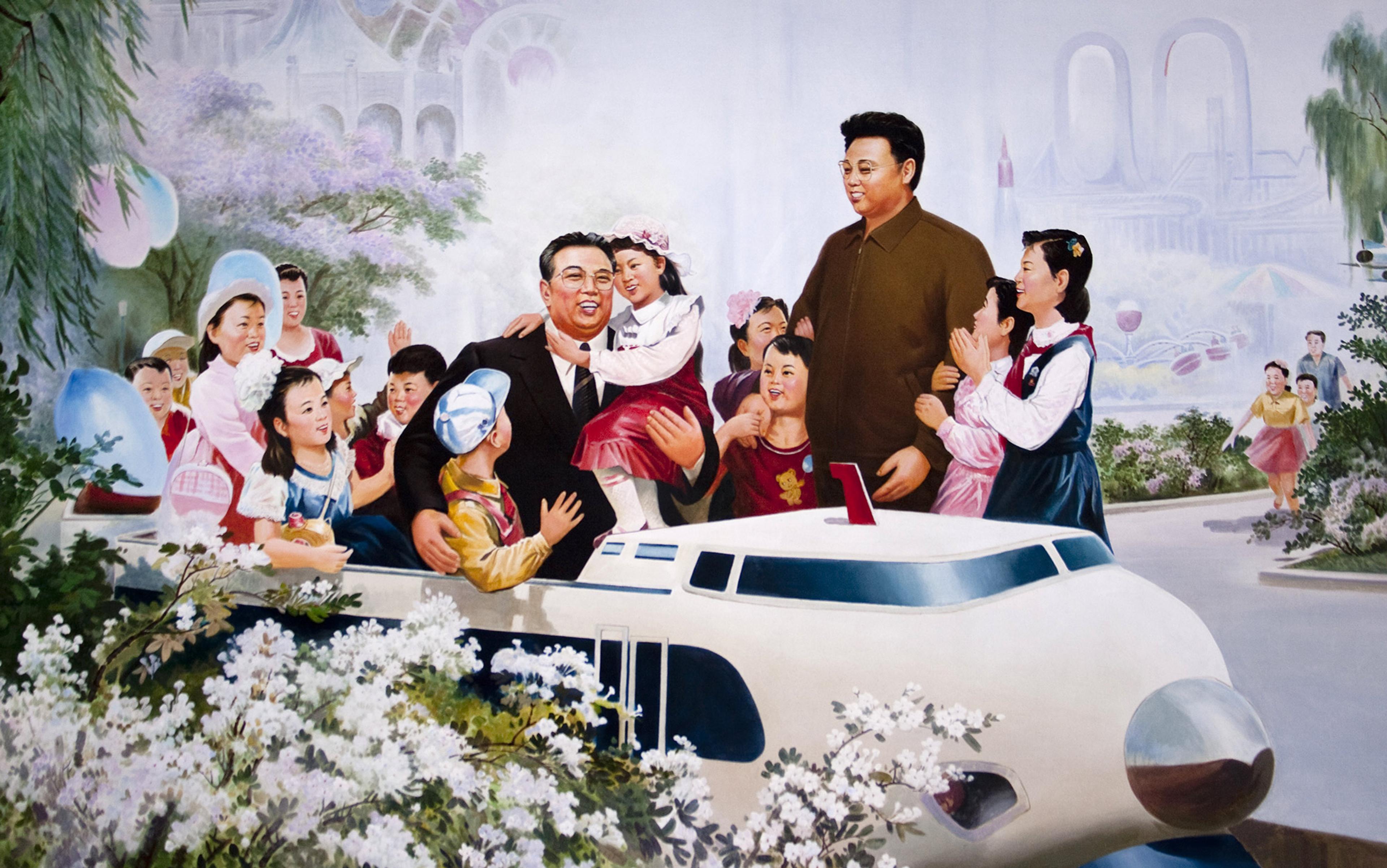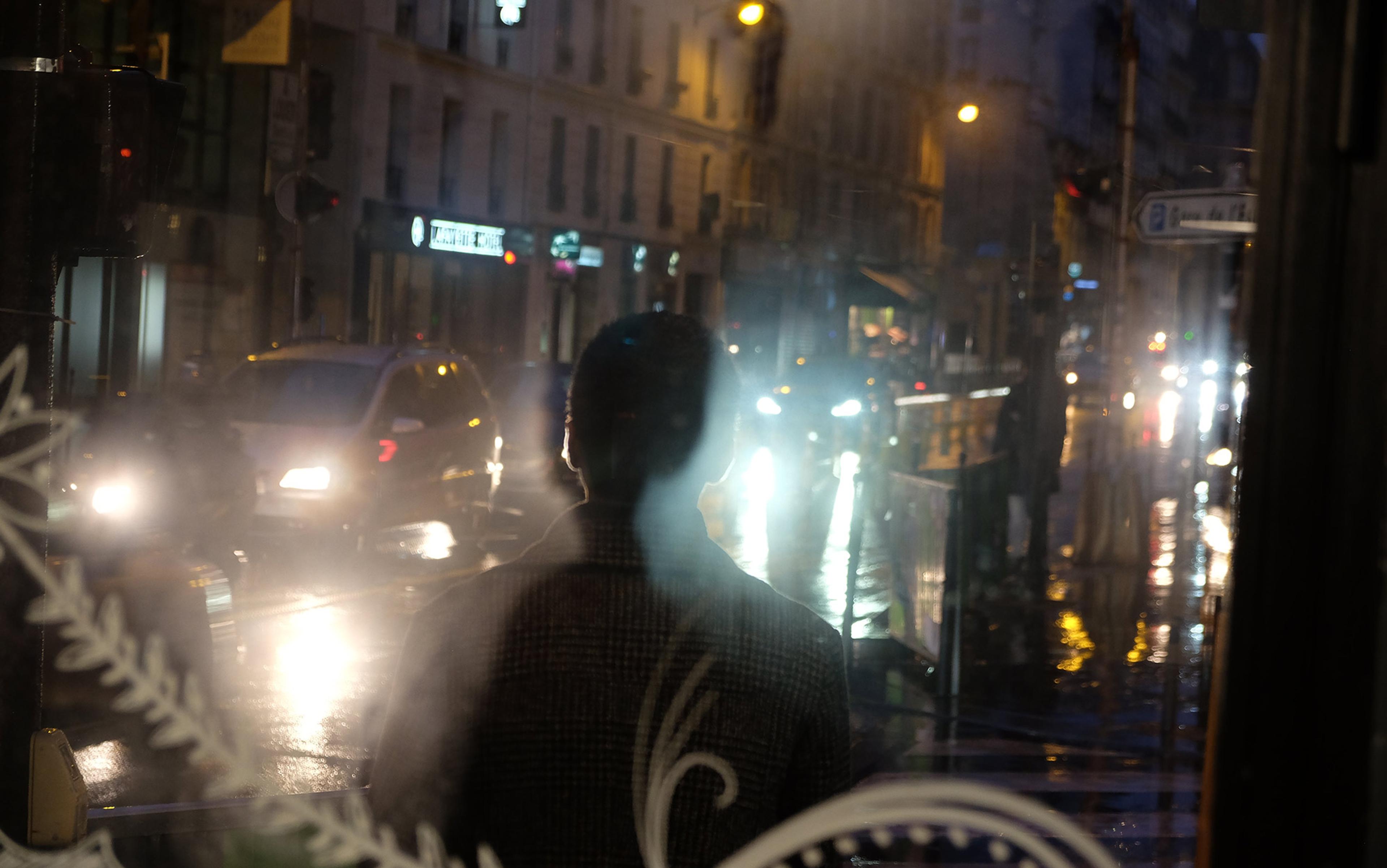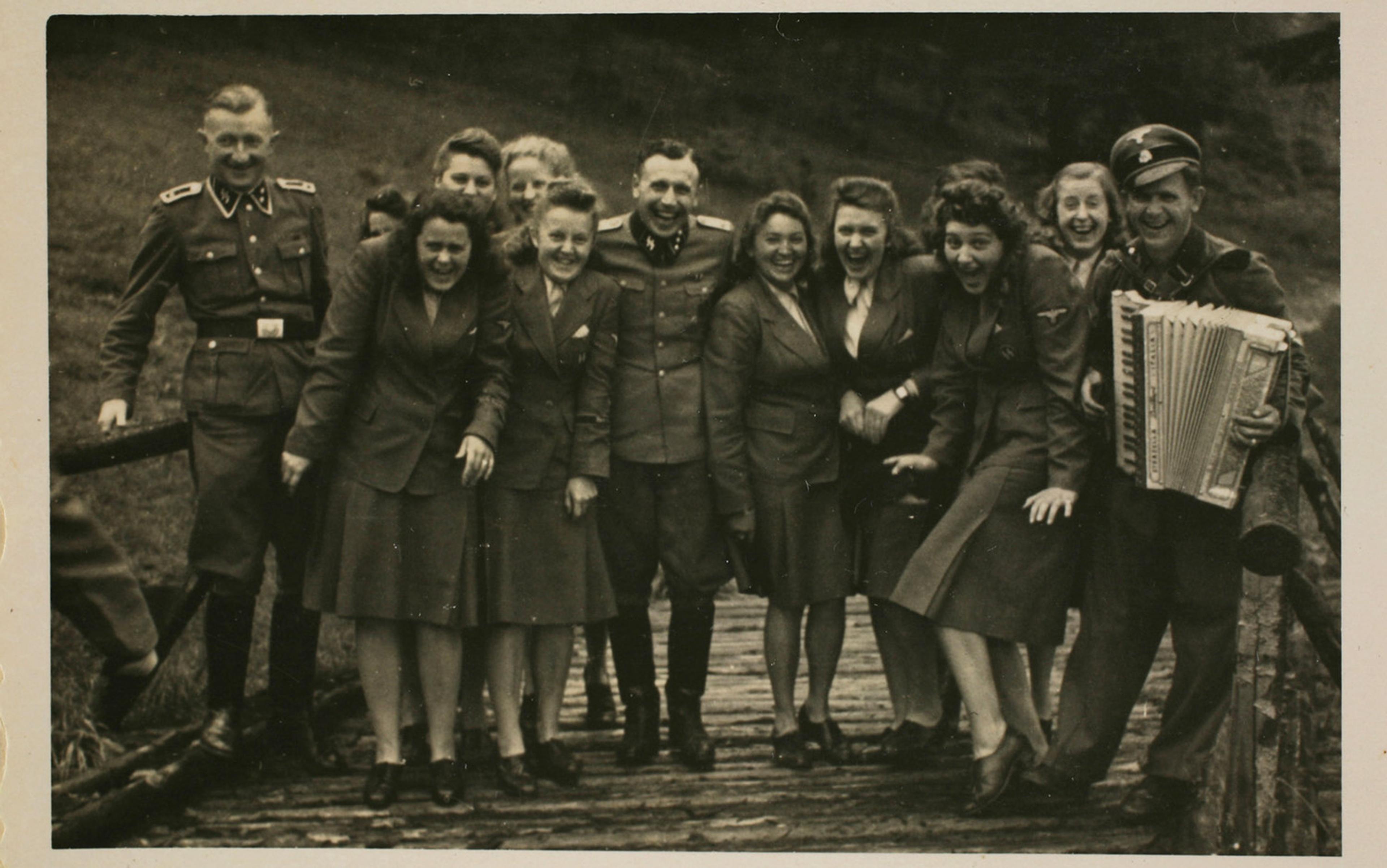I began my formal research in 1999, eight years after battling my way out of a secret, so-called Marxist-Leninist group whose leader controlled my life in its most intimate details. He determined what I wore: a version of the advice in John Molloy’s bestseller Dress for Success (1975), featuring tailored blue suits and floppy red silk bowties. More significantly, he decided when I could marry, and whether I might have children. The leader’s decrees were passed down via memos typed on beige notepaper and hand-delivered to me by my ‘contact’. Because I was a low-ranked member, the leader remained unknown to me.
I joined this Minneapolis-based group, called The Organization (The O) believing I was to contribute to their stated goal of social justice, a value instilled in me by my family. However, what I actually did revolved around, first, being a factory machinist tending numerical control lathes and, then, grunt work in the group’s wholegrain bakery (we did at least make good bread) and, finally, writing business computer programs. The fact that these tasks seemed oddly disconnected from any strategy for social change did not escape my notice. I regularly questioned (until I learned not to) how all this was leading to justice for the poor and the powerless. A stern ‘struggle with the practice’ was the only answer I ever received, and back to my labours I would go, like Boxer the horse in George Orwell’s Animal Farm (1945), hardworking but still unenlightened as to the ultimate goal.
As I ‘developed’ over the years (as our groupspeak put it) it was revealed to me that ‘struggling with the practice’ would help us transform ourselves so as to be ready to contribute to some brave new world where we would finally fight for liberation of the oppressed. Meanwhile, we foot soldiers were so exhausted by the double shifts we worked year in and year out, the endless criticisms and self-criticisms, the leadership’s frowning upon any joy and spontaneity, that we no longer had the energy nor wit to keep asking questions.
However, despite – or perhaps because of – this dull and exhausting routine, in 1991 I did eventually make my exit along with two other disaffected comrades. Together we formed what I now call an ‘island of resistance’. We were able to gradually break the code of secrecy that silenced doubts about the group and its leader. With each other as validation, we began to articulate the real, dismal and frightening story of life in The O, which had as its unlikely recruiting grounds the 1970s food co-ops of the US Midwest.
After a dramatic exit, I wrote the memoir Inside Out (2002). The book was an effort to understand how I, an independent, curious and intelligent 26-year-old, could have been captured and held by such a group for so long. It was a cautionary tale for those not yet tempted by such a fate to beware of isolating groups with persuasive ideologies and threatening bass notes.
By then, I had learned about the brainwashing of prisoners of war and others in Mao’s China and North Korea in the 1950s; I had read the psychohistorian Robert Jay Lifton’s Thought Reform and the Psychology of Totalism (1961) and the psychologist Margaret Singer’s Cults in Our Midst (1996). Singer described six conditions of cultic control among which were control of the environment; a system of rewards and punishments; creating a sense of powerlessness, fear and dependency; and reforming the follower’s behaviour and attitudes, all within a closed system of logic. Lifton emphasised that thought reform took place when human communication was controlled. Added to this, I found John Lofland’s Doomsday Cult (1966), his unrivalled undercover study of an early cell of the Unification Church – the Moonies – which outlined seven steps to total conversion centred around the isolation of the follower from everyone except other cult members. All these scholars agreed that the essence of the process was to isolate victims from their prior connections and destabilise their identity, then consolidate a new, submissive identity within a rigidly bound new network. This was achieved by alternating a regime of threats with conditional approval.
As I continued to recover from the trauma of my cult involvement, I came across the British psychologist John Bowlby’s attachment theory. This states that both children and adults will usually seek closeness to perceived safe others when stressed (even if only symbolically in the case of adults) in order to gain protection from threat. I saw this as potentially useful in helping to understand how people become trapped in cultic relationships.
Eventually, my friends twisted my arm and packed me off to the University of Minnesota. I tentatively tried a course one of them had found for me: George Kliger’s class on cults and totalitarianism. On his reading list, I found the work of the political theorist Hannah Arendt, a German Jewish refugee who examined large themes of human freedom and oppression with detailed evidence. In her seminal work, The Origins of Totalitarianism (1951), she found that the regimes of Hitler and Stalin destroyed public and private life; both regimes based themselves on ‘loneliness, on the experience of not belonging to the world at all, which is among the most radical and desperate experiences of man’.
Although The O had been a small group numbering no more than 200 at its peak, it was Arendt’s work that illuminated most clearly what I came to see as a diminutive totalitarian movement. Like the movements Arendt profiled, The O operated at the whim of a charismatic, authoritarian leader wielding an exclusive belief system to isolate each individual in order to dominate us.
In that first class, I also learned something about teaching. At his last session, the somewhat unassuming, almost doddery Kliger, in the context of discussing why people become passive in the face of totalitarianism, revealed to us that he knew personally the power of induced powerlessness. He stood up and quietly unbuttoned his sleeve. As he rolled up the fabric, the not-very-faded inked number appeared on his arm, and he explained that as a teenager he had survived Buchenwald concentration camp.
If the situation is strong and isolating enough, without any clear escape route, then the average person can cave in to the traumatising pressures of brainwashing
Inspired by Kliger, I entered the Masters of Liberal Studies programme at the age of 45. There, I learned about Stanley Milgram’s obedience experiments of the 1960s, which showed that two-thirds of ordinary people were willing to administer severe electric shocks to complete strangers when ordered to do so by the experimenter. I also learned about the conformity experiments of the 1950s by the social psychologist Solomon Asch, who demonstrated that, when faced with obviously incorrect information, 75 per cent of participants publicly denied clear evidence before their own eyes rather than buck the majority opinion. However, when just one other person disagreed with the majority and broke the unanimous bloc, the conformity effect almost entirely disappeared.
All of this became key to my own study of the social psychology of extremist political organisations. These scholars understood the power of extreme social influence to corral and corrupt even the most ordinary of individuals. Totalism works because ordinary people – at least those without prior knowledge of the controlling methods of totalism – are subject to the coercive manipulations that leaders employ. If the situation is strong and isolating enough, without any clear escape route, then the average person can cave in to the traumatising pressures of brainwashing.
By 2007, I had completed my PhD. My dissertation examined a New York-based ‘Leftist’ political cult called the Newman Tendency, run by Fred Newman, a former university lecturer in philosophy. A strange combination of Marxism, electoral politics, group therapy and theatre, the Tendency was active during the same years as The O. But since it was not The O, it afforded me some distance and a welcome relief from thinking about my own experience.
Newman had controlled the group for more than 40 years before his death in 2011. After interviewing former members, I learned that group members were brought in through the various programmes, but were all mandated to enter therapy that they had to pay for. Gradually, they abandoned outside jobs and worked for the group, often off the books. They shared apartments, attended meetings late into the night, and restricted relationships with outsiders. Instead, many were set up in casual sexual relationships with other followers in a practice called ‘friendosexuality’. They were also assigned a ‘friend’ whose role was to monitor and criticise to keep them in line. Those with money were soon parted from it. Some women in the group were told by Newman to have abortions, and few had children while involved.
The Newman Tendency, like The O, fit the five features of a totalist system I had identified based on Arendt and Lifton’s work. The first of these characteristics is that the leader is both charismatic and authoritarian. Without charisma, the leader would be unable to draw people to him or herself. Without authoritarianism, leaders would lack the internal motivation and the ability to bully and control followers. ‘Yeah, somebody taught him how to abuse people,’ a former follower said of Newman. ‘He’s charming, too … If he sat down right there next to me, I’d say: “Hey Fred, how are you doing? Are you still corrupting people? … Are you still screwing 18 women at the same time?” … But you know, he was a likeable guy!’
Not all leaders want to get rich, gain sexual favours, or grab political power. But all want utter control over others. Money, sex, free labour or loyal combatants are all fringe benefits, and certainly most leaders take advantage of these, some in a big way. But absolute control over their relationships is the key.
‘In the centre sits the Leader, separated by an inner circle who spread around him an aura of impenetrable mystery’
These leaders rule over isolating, steeply hierarchical and closed structures, some with front groups serving as transmission belts to the outside world. This isolating structure is the second characteristic of a totalist group. As the organisation grows, it develops concentric, onion-like layers with the leader in the centre providing the driving movement. There might be several layers – from the leader, to the lieutenants, to the elite inner circle, to other varying levels of membership, down to mere fellow-travellers or sympathisers.
Arendt describes the innermost part of the structure in powerful terms: ‘In the centre of the movement, as the motor that swings it into motion, sits the Leader. He is separated from the elite formation by an inner circle of the initiated who spread around him an aura of impenetrable mystery.’ This mystery adds to the feeling that the leader is everywhere and sees everything. Meanwhile, the leader keeps the inner circle off-balance by sowing distrust, and promoting and demoting personnel seemingly at random.
Newman’s inner circle was composed of a set of women known as the ‘wives’ or the ‘harem’, who served as his most trusted lieutenants, as well as, at different times, his bedmates. Beyond that were 40 or so ‘lifers’ who were the next administrative layer and also did much of the social therapy. Beyond them, cells of rank and file party members, also fully under Newman’s control, did fundraising, and provided labour.
People in totalist organisations are pressed so tightly together that their individuality is erased – as are any trusting interactions among them. Everyone is a ‘friend’ but true friendship is suppressed as a diversion from, and a threat to, attachment to the cause, the leader and the group. In fact, far from finding true comradeship or companionship, followers face a triple isolation: from the outside world, from each other within the closed system, and from their own internal dialogue, where clear thinking about the group might arise.
The third element of totalism is the total ideology, or, as Newman called it: ‘A historical totality that has no beginning, middle or end’. The exclusive belief system is controlled entirely by the leader, empowering him or her through the creation of a fictional world of secrets and lies.
For instance, only certain people knew of Newman’s life with the ‘harem’, the funnelling of funds up the hierarchy, the financial fraud, the stash of weapons and the weapons-training that went on at one time (apparently to protect the funds). People donating money, volunteering or working 24/7 supposedly for the cause of social justice had no access to knowledge of the internal life of the inner circle and the reality of the leadership. The lies created a fictional world that became more bizarre, elaborate and far from normality the further into the system one got.
‘After a while, things that seemed preposterous seem normal’
The fictional, invented quality of the total ideology reinforces the confusion and eventual dissociation experienced by followers. Yeonmi Park, who escaped from North Korea with her mother in 2007, recounts in her memoir In Order to Live (2015) how ‘North Koreans have two stories running in their heads at all times, like trains on parallel tracks.’ She passed starving orphans every day but believed the propaganda slogan that ‘Children Are King’.
In the same way, Islamist fighters are promised heavenly rewards as they detonate suicide vests. The extreme disconnect leaves the follower helpless to understand what is really happening. ‘If you try to get clarification, they say it’s not something you can understand … Anything you bring up from your own background is deconstructed. […] After a while, things that seemed preposterous seem normal,’ Gillian, a former member of the Newman Tendency, told me.
The fiction starts slowly, of course, with mere propaganda intended for the public and the wider world. Scientology, for instance, hawks its ‘pathway to greater freedom’ and broadcasts its agenda for a drug-free world. The fabulous theology of Scientology – where alien beings hurled out of a volcano inhabit our bodies – was an inner ideology reserved for senior, well-indoctrinated members; it was released to the wider public only through a leak.
After propaganda comes indoctrination, the state where the totalist system consolidates control, via what Arendt calls ‘the power to drop iron curtains to prevent anyone’s disturbing, by the slightest reality, the gruesome quiet of an entirely imaginary world’.
After the iron curtain of the total ideology has dropped, no questions or doubts are allowed. Should you voice your concerns, a network of monitors will turn you in for reeducation. Should that reeducation fail, as happened with me, then you are cut from the group, never to speak with your former compatriots again.
For a totalist system to wield complete control, the leader must tap fear – this is the fourth element of totalism. The process of brainwashing that totalist systems engage in is one of psychological, coercive manipulation where the leader or group alternates terror with ‘love’. Bowlby said that when we are frightened, we don’t simply run away from the fear, but run to a safe haven, ‘to someone…’ – and that someone is usually a person to whom we feel attached. But when the supposed safe haven is also the source of the fear, then running to that person is a failing strategy, causing the frightened person to freeze, trapped between approach and avoidance.
Mary Main, the renowned attachment researcher at the University of California, Berkeley, called this type of fear-based relationship ‘disorganised attachment’. This has a two-fold result: a confused emotional bonding to the source of fear in a failed attempt to seek comfort, and a cognitive dissociation, that is, the inability to think about one’s feelings. Fear or stress without escape – ‘fright without solution’, as attachment researchers refer to it – is a traumatic state that derails a person’s ability to think logically and clearly about the situation and therefore to take action to resolve it. Further, never achieving safety from the threat, they will keep returning to the relationship trying to gain that safety. Having disabled logical thinking about the traumatic relationship, the leader can then introduce even more of the fictitious ideology to explain away and redirect the follower’s terror.
It’s a positive feedback loop with a biochemical element: physiologically, the victim is engaged in an effort to manage their cortisol or anxiety levels by seeking proximity to a safe haven, but never succeeding in attaining adequate comfort. It is for this reason that we can predict that cultic systems will attempt to interfere with and control any alternative attachment relationships a person might have. To fail to do so would allow the follower to find a safe haven elsewhere and potentially escape the emotional and cognitive control of the group. This is the same thing we see in controlling relationships such as in cases of domestic violence, of the Stockholm Syndrome or, frequently, with pimps and prostitutes, as well as in human trafficking.
Members of the Newman Tendency were in a constant state of fear: sleep-deprived, isolated from all close persons not in the group, and facing constant criticism, they became trapped, unable to act or think independently. At the same time, the group positioned itself as the only safe haven. Denise, a former member, was brought into the group through therapy. Although she had previously been apolitical, she soon ended up working long, unpaid shifts (save for a small stipend) on group projects, living in a group house, and in a relationship with another follower. Even when she was on the road for one of the Tendency’s political campaigns, she had to phone in from telephone booths to get therapy, which she paid for.
‘I was so afraid,’ she told me. ‘You know that, that story about the elephant and he’s hooked up with a, a chain on the pole, and he’s trying to … break free. Eventually, you can hook the elephant up with a rope because in that animal’s mind it believes that it can’t break free, and that’s what it was like for me.’
Different groups have different fear-arousing themes and methods: the oncoming apocalypse, fear of outsiders, fear of punishment, and exhaustion, among many other types of threatening strategies. But the leader is always the sole saviour, the one who will lead them away from (or through) the fear they are experiencing to a wonderful safety, to paradise, to a perfect, transformed world.
Isolating and fear-driven systems led by authoritarian figures yield deployable followers who override their own survival needs and autonomy in the service of the group. This creation of deployable followers is the fifth characteristic of such groups. Marina, also recruited to the Tendency through therapy, rose to become a favoured member, working full-time on the group’s National Alliance paper, along with other tasks. She neglected her two children all while witnessing money laundering, fraud and other families being pulled apart. She was so loyal, she said: ‘I remember feeling like I would take a bullet for Fred.’
Every day in the media we can see the destructive power of this coercive psychological control put in place by pathological leaders. Whether it is parents who neglect or abuse children under a leader’s command, or terrorist fighters who blow themselves up for a fictional liberation, or parishioners impoverished by so-called ‘prosperity’ preachers, getting people to this point requires the conditions and processes I have outlined here. Once this fear-based control is in place, it is quite difficult to break: the follower’s dissociation and disorganised emotional attachment to the leader or group makes it extremely difficult to look clearly at what is happening. In fact, any attempt to do so only creates more fear, causing further disorganised bonding to the group to attempt to ease the stress.
‘The greater man’s ignorance of the principles of his social surroundings, the more subject is he to their control.’
But there are ways out. One way is to find a trusted other (as in my case) to help you take a good, hard look at reality. Time away from the group, where thinking can be reintegrated, is another way out. In Masoud: Memoirs of an Iranian Rebel (2004), Masoud Banisadr writes that he was able to leave the Iranian Marxist-Islamist organisation the Mojahedin-e-Khalq after a stay in hospital away from the group’s influence. In Radical: My Journey from Islamist Extremism to a Democratic Awakening (2012), Maajid Nawaz recounts how he left the Islamist Hizb ut-Tahrir after his imprisonment in Egypt where he was able to reengage his critical thinking.
Sometimes, people’s thinking can kick back into gear when they experience repeated, counter-examples that challenge the ideology – such as receiving kindness from the ‘enemy’ or seeing apocalyptic predictions fail time after time after time. And a person might also leave if the leadership makes demands that are simply too extreme, and for which the follower has not been adequately prepared. Marina Ortiz was finally able to leave the Newman Tendency when the leadership told her to put her child into foster care.
In today’s world, it is imperative for us to understand the workings of charismatic and authoritarian leaders and the organisations they lead. Not all in these systems are recruited: some are born into fundamentalist religious groups, others are kidnapped, as in the case of the child soldiers of Joseph Kony’s Lord’s Resistance Army. Some simply live in totalitarian states. Many survivors are now speaking out about their experiences. Among those telling their stories are adults who were born or raised in cults and extreme fundamentalist religions and former child soldiers from the Sudanese People’s Liberation Army and Cambodia’s Khmer Rouge. Recently, escapees from North Korea have started recounting the reality of that regime.
In a time of rapid change, huge movements of people and a general sense of instability, people are naturally going to seek security and stability. Cults and totalist regimes thrive in these conditions. Given the right circumstances, almost anyone is vulnerable to the psychological and situational pressures I have discussed. The respected scholars in my field have repeated over and over again that the way to protect ourselves is through knowledge. In 1952, Asch wrote: ‘The greater man’s ignorance of the principles of his social surroundings, the more subject is he to their control; and the greater his knowledge of their operations and of their necessary consequences, the freer he can become with regard to them.’
This knowledge must be specific: how this process of control works, and how leaders deploy the brainwashing methods of isolation, engulfment and fear. Seventy years of post-war scholarship about this already exists, along with much new research. We must use these valuable resources, along with the voices of the survivors, to resist.
‘Terror, Love and Brainwashing: Attachment in Cults and Totalitarian Systems’ by Alexandra Stein © 2016 – Routledge.






